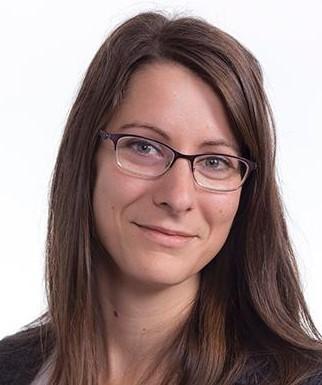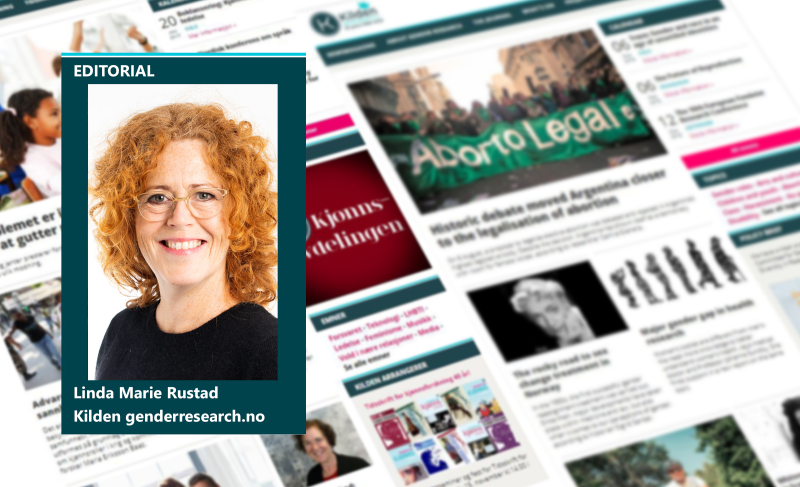For a long time, Norwegian higher education and research institutions have worked to promote gender equality and gender balance among their faculty. In the past few years, more attention has been given to other aspects of diversity than gender. What do we currently know about the efforts to promote gender equality and diversity in research and innovation?
Kilden genderresearch.no recently launched the policy brief "Gender equality, gender balance and diversity in research and innovation". It is based on the research review “What do we know about gender equality, gender balance and diversity in research and innovation?" (in Norwegian only). One of the objectives was to provide an overview that would make it easier to design research-based measures targeting this area.
Gender and innovation – a less studied area
“In Norway, the government highlights the importance of gender equality and ethnic diversity in research and innovation”, says main author of the research review Trine Rogg Korsvik.
“Recently, it has even become a requirement for institutions applying for EU research funding or funding from the Research Council of Norway to have a gender equality plan in place. This new requirement makes it particularly relevant to look at what we know and don’t know about this field, and what we need to research further.”
The emphasis on counting the number of academic articles is evidently a disadvantage to people who cannot sit day and night writing articles.
The research review shows that gender equality in academia is a major field of research in Norway, while there is relatively little research on gender and innovation. Even the term “innovation”, which has traditionally been used when referring to technology and patents, has evolved to also encompass how innovation is organised and what processes it involves.
This development enables research to study innovation processes where the goal is not necessarily to develop a marketable product. In turn, this makes it possible to include a gender and diversity perspective in studies of innovation to a larger extent than before.
From discrimination to “excellence”
The review shows that research on gender equality and ethnic diversity in academia in Norway has developed significantly over time.

“Previously, the research tended to concentrate on how cultural factors in academia discriminate against women. Now there is a tendency for the research to pay increasing attention to how structural factors and research policies influence gender equality and diversity in academia,” Korsvik explains.
Examples of such structural factors are the internationalisation and globalisation of the academic labour market and the requirements for “excellence” in research and innovation.
“Over the past twenty years, Norwegian universities have undergone major reforms. Until the turn of the millennium, the proportion of female professors in Norway was less than ten per cent. It was therefore very relevant to study how workplace cultures and male-dominated environments excluded women,” she says.
According to recent studies, open and direct discrimination of women seldom occurs in academic hiring processes in Norway. The aim to achieve gender balance and diversity among faculty is acknowledged in academia, hence the research tends to emphasise other factors that facilitate or impede academic careers.
“In academic hiring processes there is an increased emphasis on so-called objective criteria, such as the number of publications the candidate has published in highly ranked international journals. The emphasis on counting the number of academic articles is evidently a disadvantage to people who cannot sit day and night writing articles,” says Korsvik.
“It is difficult for people with care responsibilities for children to publish enough to meet the requirements made of ‘excellent’ academics.”
The complexities of diversity
Academia's call for “excellence” has, together with the internationalisation of the Norwegian research sector, consequences for gender equality and diversity, Korsvik explains.
“In Norway, the proportion of female researchers in academic top positions within the STEM field has in fact decreased over the past few years. At the same time, these disciplines have attracted a large number of male researchers from abroad.”
Since 2016, the Nordic Institute for Studies in Innovation, Research and Education (NIFU) has provided so-called “diversity statistics” on the proportion of faculty with migrant backgrounds in the Norwegian research sector. The diversity statistics are aggregated on the basis of gender and national background and distinguish between foreign-born faculty and faculty whose parents are foreign-born. In addition, NIFU's Research Personnel Register has collected data on Norwegian faculty since 1965. Recently, the responsibility for faculty statistics was transferred to Statistics Norway.
According to Korsvik, the diversity statistics provide valuable information about gender and ethnic diversity in Norwegian academia.
“The statistics give us the opportunity to distinguish between different Norwegian faculty groups, for instance between scientists coming from Germany to be appointed to a professorship in Norway and migrants who come to Norway for other reasons and eventually get a position in academia.”
Policy lagging behind
The statistics provide knowledge of the complexity of ethnic diversity in Norwegian academia, but has so far not been applied to Norwegian research policy, Korsvik stresses. The gender equality measures most frequently applied by the research sector do not necessarily address the structural challenges related to the criterions of "excellence" and the internationalisation of the academic labour market.
“Typical gender equality measures in Norwegian academia are mentor schemes for female scientists, training for female associate professors who aim to apply for promotion to full professor, and time-limited funding schemes for female associate professors with children so that they can concentrate on scientific publishing in order to qualify as professors,” she says.
It’s not the case that all departments of mathematics have the same challenges.
“Research shows that female scientists have positive experience of these types of schemes, although they certainly don’t solve all problems related to the lack of gender equality in academia. On the other hand, there are no dedicated measures in academia aimed at increasing ethnic diversity.”
Regarding the aim of increasing ethnic diversity in Norwegian academia, it is timely to ask what kind of ethnic diversity we are aiming for and how we can measure it. Is the number of "international" scientists from European countries in academic positions in Norway an appropriate diversity measure?
“The statistics show that descendants of migrants are extremely underrepresented in academic positions in Norway, even though students with migrant backgrounds to a much larger extent than the majority population take higher education. An important question for further research is why so few of them choose to pursue a career in research. We don’t know because there’s no research on it.”
Temporary positions are obstacles to gender equality and ethnic diversity
The research on gender equality and ethnic diversity in academia highlights the increasing use of temporary academic positions as an obstacle to gender equality. The number of PhD research fellows and post-doctoral fellows has increased substantially in Norway over the past few years, but temporary contracts are common also in other academic positions. According to the most recent figures, only one in five post-doctoral fellows go on to land a permanent academic position. A large proportion of the temporary academic positions, particularly among the post-doctoral fellows, are held by non-Norwegian scientists.
“So, at the post-doctoral level, you could say that ethnic diversity is high. However, many of these scientists belong to the 'post-doc proletariat' which refers to researchers who must move from country to country to work in temporary post-doctoral positions, often with poor working conditions and low wages,” says Korsvik.
Uncertain career pathways combined with high work pressure are often emphasised as potential obstacles for women in academia, especially for women with migrant backgrounds.
Research findings point in different directions
Despite the change in perspective towards more structural explanations for gender inequality in academia, Korsvik believes that more established feminist explanations that emphasise the male dominated academic culture characterised by gendered hierarchies cannot be disregarded.
“Recent studies show that women are more often than men excluded from important academic networks, and women's scientific work is often less acknowledged. Sexual harassment of female scientists is still a problem. Academia is not a perfect meritocracy.”
You no longer find openly sexist descriptions of women's academic production in reviews from appointment committees as was, in fact, the case in the 1980s.
The research review shows that there is a certain divergence in research literature on the discrimination of women in academia. Qualitative studies tend to explore the barriers women meet in academia to a larger extent than quantitative studies.
“Quantitative studies that, for example, look at whether women are discriminated against in hiring processes don't reach the same conclusions as the qualitative studies. You no longer find openly sexist descriptions of women's academic production in reviews from appointment committees as was, in fact, the case in the 1980s. The diverging results from qualitative and quantitative studies of gender in academia illustrate how the design of a study can produce different conclusions.”
“Local context is important”
Ivana Suboticki is a researcher at the Department of Interdisciplinary Studies of Culture at the Norwegian University of Science and Technology (NTNU). She has studied gender balance and equality measures at NTNU and agrees that research in the field of gender equality has changed in recent years. She is pleased that this new report has been launched.

“Previous research used to be very much about how women were excluded,” she says.
“But in our research team, we now look more at what kind of inclusion practices actually work at the local level and the effect of local context. This way, you can tailor the measure to the specific local situation.”
The research review from Kilden also mentions the importance of achieving a better understanding of how different disciplines and academic hierarchies play a role when it comes to gender equality and ethnic diversity. Suboticki agrees with this, but also believes that local knowledge is important in this context.
“It’s not the case that all departments of mathematics have the same challenges; we need to be more specific in our approach,” she says.
“At the Faculty of Humanities here at NTNU, for instance, 40 per cent of top positions are held by women, but there is huge variation between the departments, from 11 per cent at the lowest to 67 per cent at the highest. This can even vary at the discipline group level. It’s very important that people understand this variation in gender balance challenges."
Know little about social background
The research review found little research that addresses the significance of social background in academia, but this will be more relevant in the future, Korsvik believes. When the Norwegian government appointed a new Committee for Gender Balance and Diversity in Research (KIF) in 2022, its mandate had been extended to include social background.
“More research is needed on the effects of social reproduction in academia. We do know that social class background seems to be more decisive for women than for men, meaning that there is evidence that a larger proportion of female academics than male academics come from an academic family background. Studies have suggested that their advantageous social background makes up for the disadvantages of being a woman in academia. However, the intersection between social class and gender has hardly yet been discussed in research.”
Korsvik reminds us that social background is just as relevant for diversity as ethnicity. For example, when one out of three new graduates with law degrees come from a family where one of the parents also has a law degree, how does that affect the research?
“We also need more studies on the role of internationalisation in relation to the content of research and in teaching,” she believes.
“Discussions of gender equality and ethnic diversity in academia tend to overlook the fact that teaching is one of the main tasks of faculty members. In future, it would be interesting to explore the effects of internationalisation on the labour market and the ‘excellence’ requirements on teaching, the content of research and how research is used by society.”
Towards a new research strategy
Ivana Suboticki at NTNU finds it clear that, in future research, more attention must be given to the diversity perspective.
“It’s a particular challenge that studies on gender balance have been concerned with representation, but we may need to think differently in relation to diversity issues. It’s not a given that measures aimed at gender equality are also effective when it comes to ethnic diversity."
She believes that it is now important to the field of research to find out what can be transferred from traditional gender equality work to ethnic diversity work.
“I believe this report can help the research sector to find good strategies going forward, both when it comes to research on gender equality and policies to promote gender equality work,” she concludes.



